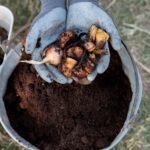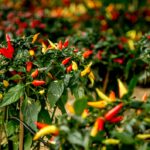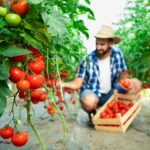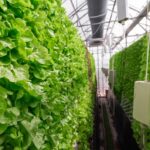In the intricate web of life, farming and biodiversity conservation are not mutually exclusive endeavors but rather complementary pursuits intertwined in the fabric of sustainable agriculture. As stewards of the land, farmers play a crucial role in safeguarding biodiversity and preserving wildlife habitats while meeting the demands of food production. By adopting practices that prioritize ecosystem health and resilience, farmers can cultivate a harmonious balance between agriculture and conservation, ensuring the long-term viability of both.
The Importance of Biodiversity Conservation in Farming:
Biodiversity, the variety of life on Earth, is essential for the health and functioning of ecosystems and the services they provide, including pollination, pest control, soil fertility, and water purification. Agriculture, as one of the largest land uses globally, has a profound impact on biodiversity, affecting habitats, species populations, and ecosystem processes. Protecting biodiversity in farming landscapes is critical for maintaining ecosystem stability, resilience, and productivity in the face of environmental challenges such as climate change, habitat loss, and pollution.
Strategies for Protecting Wildlife Habitats on Farms:
- Maintaining Hedgerows and Riparian Buffers: Planting and preserving hedgerows, windbreaks, and riparian buffers along waterways can provide essential habitat and food sources for wildlife while protecting soil and water quality. These vegetative buffers serve as corridors for wildlife movement, nesting sites for birds, and refuge for beneficial insects, helping to enhance biodiversity on farms.
- Implementing Agroforestry Practices: Agroforestry integrates trees and shrubs into agricultural landscapes, providing multiple benefits for both farmers and wildlife. Agroforestry systems such as alley cropping, silvopasture, and forest farming create diverse habitats, enhance soil health, and improve microclimate conditions while increasing farm productivity and resilience.
- Promoting Natural Pest Control: Encouraging natural enemies of pests, such as predatory insects, birds, and bats, can help reduce the need for chemical pesticides while supporting biodiversity on farms. Creating habitat features such as nest boxes, insectary plants, and water sources can attract beneficial species and enhance their effectiveness in controlling pest populations.
- Practicing Regenerative Agriculture: Regenerative agriculture focuses on restoring soil health, enhancing biodiversity, and sequestering carbon through practices such as cover cropping, crop rotation, no-till farming, and diversified cropping systems. By mimicking natural ecosystem processes, regenerative agriculture promotes resilience and sustainability in farming landscapes while providing habitat for a variety of wildlife species.
- Preserving Natural Areas: Protecting and restoring natural habitats within and around farms, such as wetlands, grasslands, and woodlands, is essential for maintaining biodiversity and supporting wildlife populations. Establishing conservation easements, wildlife corridors, and buffer zones can help safeguard these critical habitats and prevent fragmentation and degradation.
The Benefits of Farming and Biodiversity Conservation:
The integration of farming and biodiversity conservation offers numerous benefits for farmers, ecosystems, and society as a whole. By enhancing ecosystem services, improving soil health, and promoting resilience to climate change, biodiversity-friendly farming practices contribute to increased agricultural productivity, reduced input costs, and enhanced food security. Furthermore, conserving wildlife habitats on farms can provide recreational opportunities, ecotourism income, and cultural benefits, enriching the lives of local communities and fostering a deeper connection to the natural world.
Farming and biodiversity conservation are inherently interconnected, with each depending on the other for long-term sustainability and prosperity. By adopting practices that prioritize ecosystem health, farmers can play a pivotal role in protecting wildlife habitats, preserving biodiversity, and fostering resilient and productive landscapes. Through collaboration, innovation, and stewardship, farmers and conservationists can work together to cultivate a future where agriculture thrives in harmony with nature, ensuring a bountiful harvest for generations to come.
Join 'Farmers Mag' WhatsApp Channel
Get the latest Farming news and tips delivered straight to your WhatsApp
CLICK HERE TO JOIN






